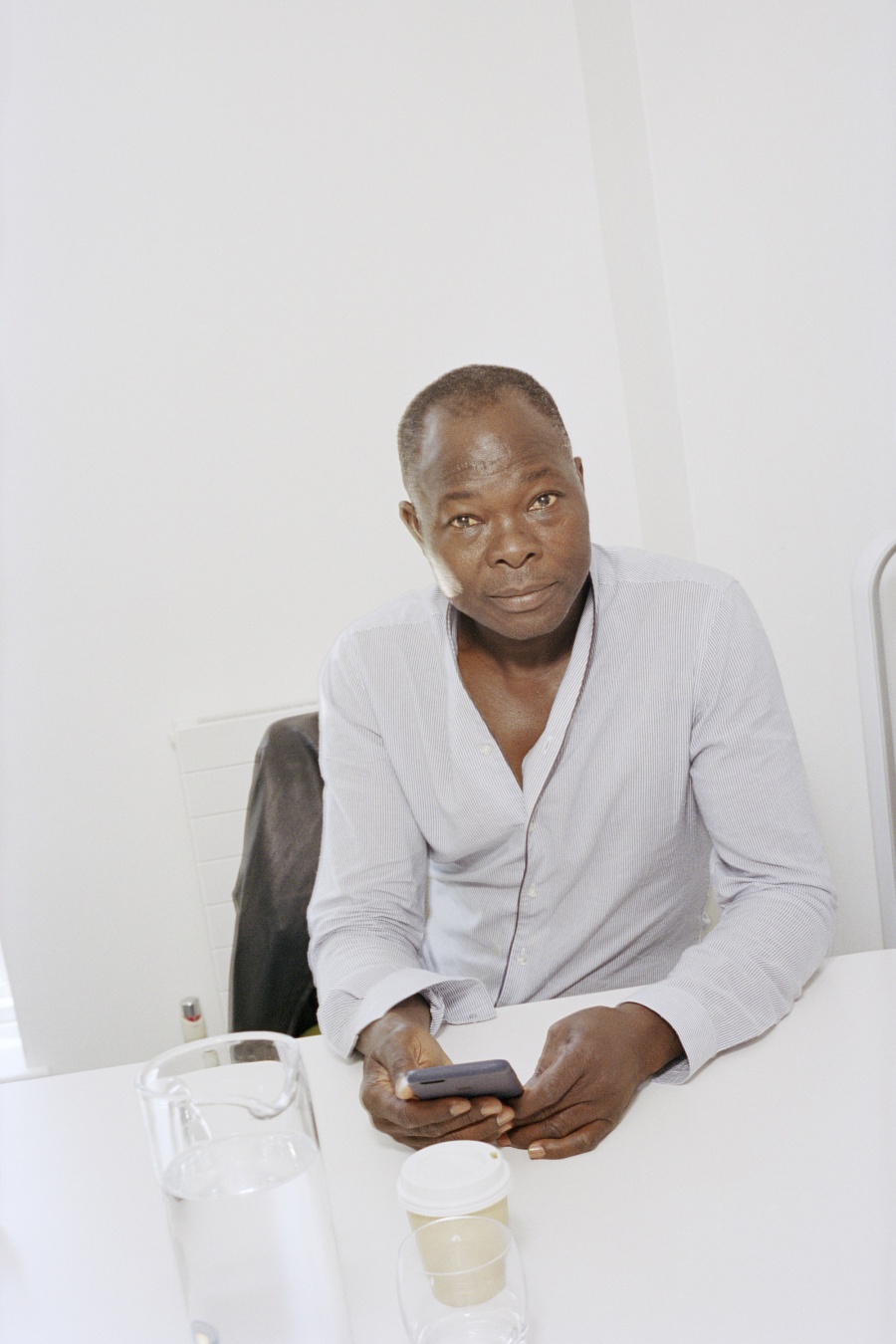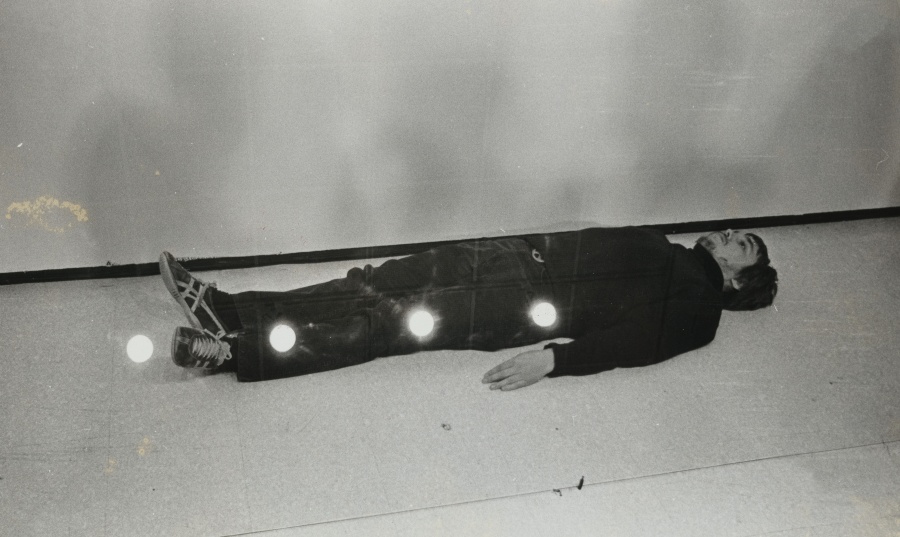Deadman by Chris Burden
25.02.21 | Article by Chris Burden | Art, culture, interview, Magazine | MM18 Click to buy
At 8 p.m. I lay down on La Cienega Boulevard and was covered completely with a canvas tarpaulin. Two fifteen-minute flares were placed near me to alert cars. Just before the flares extinguished, a police car arrived. I was arrested and booked for causing a false emergency to be reported. Trial took place in Beverly Hills. After three days of deliberation, the jury failed to reach a decision, and the judge dismissed the case.

Photography by Gary Beydler
Deadman (1972)
Riko Mizuno Gallery, Los Angeles, California: November 12, 1972
CHRIS BURDEN:
And so I said to Riko, for my show, I don’t want to do it in a gallery… My plan was to have myself covered in this tarp next to a parked car — which happened to be Riko’s, by the way, it was a Saab — and to lie down in the traffic lane, but as close to the car as possible, covered in a tarp with two flares burning so people didn’t hit me. And my little pickup truck was parked a few spaces down the road. And the idea was viewers come to the gallery —
“Where’s the art? Where’s the performer? What’s going on?”
It’s outside. So then people figure out that it’s me — or this lump or whatever — lying underneath this green Army tarp, and that the flares would burn, people would stand on the sidewalk, watch, watch, watch. Flares burn out, I get up, fold the tarp up, walk back to my car and drive away. People would go, “Huh? What was that?” That was — that was the game plan.
Never in a million years did I think the police would be called. Never in a million years did I think the crowd would spill out into La Cienega Boulevard blocking both lanes. Of course, the flares, the people in the street, the tarp with the lump under it, passers-by going north called the cops. Then the cops showed up. “Anybody see this? Anybody — do you know what happened?” Mum, silence from the crowd. So the cops are expecting to see a dead body mangled, you know. So they pick up the corner of the tarp and they lift it off, peel it off really slowly… And nervous, you know, and they’re just human beings. They don’t want to see a dead, mangled traffic victim.
So they pull off the tarp, and they can see that my eyes are still working. They can see that my eyes are working. So they said, ‘Can you walk?’ I said, ‘Yeah.’ They said, ‘What are you doing? What happened?’ I said, “I’m making an art performance…’ They said, ‘We’re arresting you.’ So they arrested me and I went to the Hollywood jail.

Photography by Chuck Arnoldi
INTERVIEWER:
On what grounds?
CHRIS BURDEN:
They charged me with calling a false emergency, reporting a false emergency — or causing a false emergency or something… My bail was $50, but nobody wanted to pop for it…
I got out the next day at four-thirty and had a pre-trial hearing and — Jim Butler… was a lawyer, so he took up my case… And we finally went to a jury trial.
…
INTERVIEWER:
This is early —now we’re in, like, mid-1973.

CHRIS BURDEN:
Yeah. So it’s Beverly Hills courtroom.
Barbara Smith actually — the drawing in the book is — Barbara Smith made that drawing, because you weren’t allowed to take pictures. It’s a — trial goes on for days, three days.
Butler says, ‘Look, La Cienega is a known art gallery street, number one. Number two, the roads aren’t just made for cars. They’re made for people to walk on, for bicycles, for horses. So they’re multipurpose, and they can also be used to make art in. Mr. Burden was not trying to call a false emergency in. His intent was to make an artwork.’ And you know, I think I testified, and told him what I was trying to do, and I was planning on getting my car and driving off. I never had any idea it was going to cause a problem. I just didn’t want to get hit by a drunk driver. Hung jury.

Drawing by Barbara Smith





